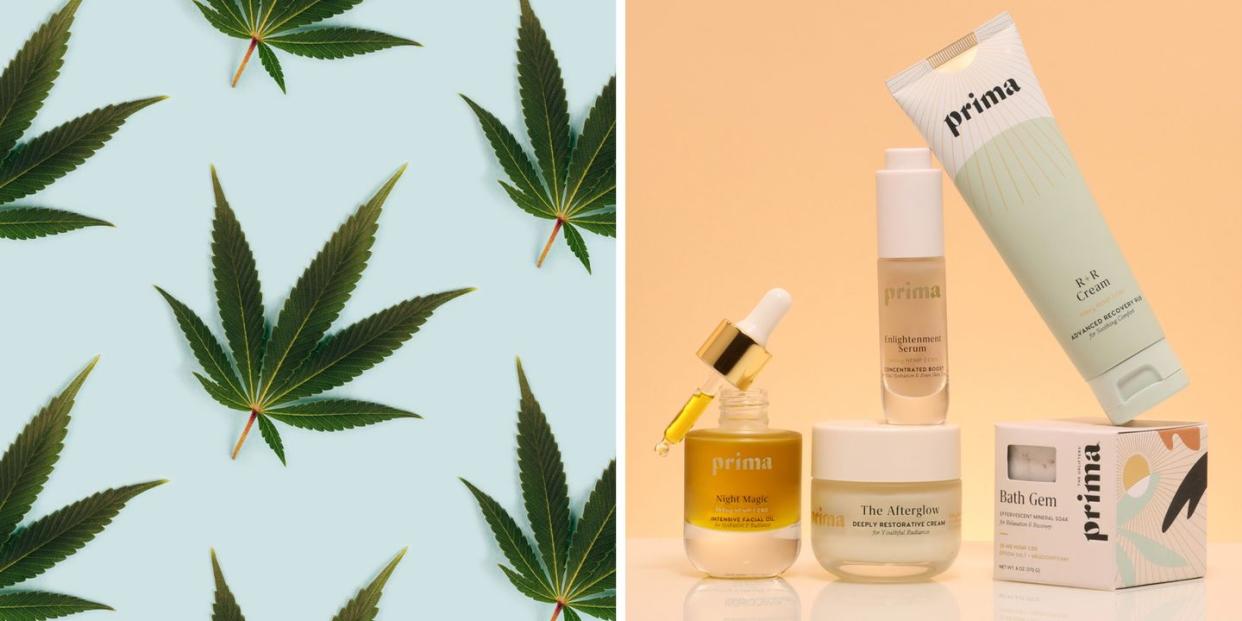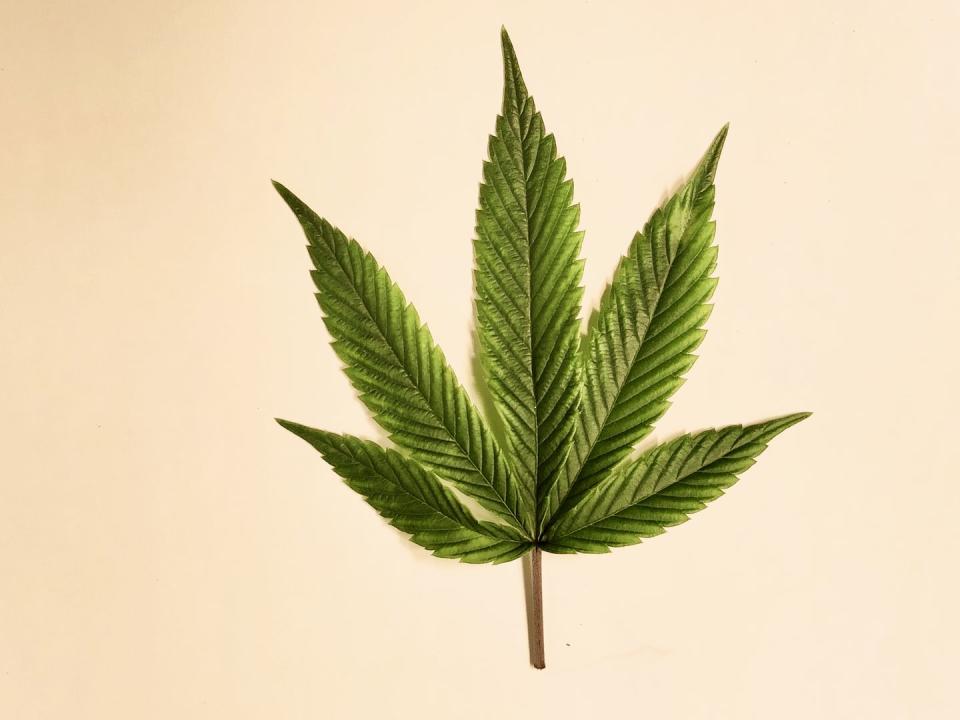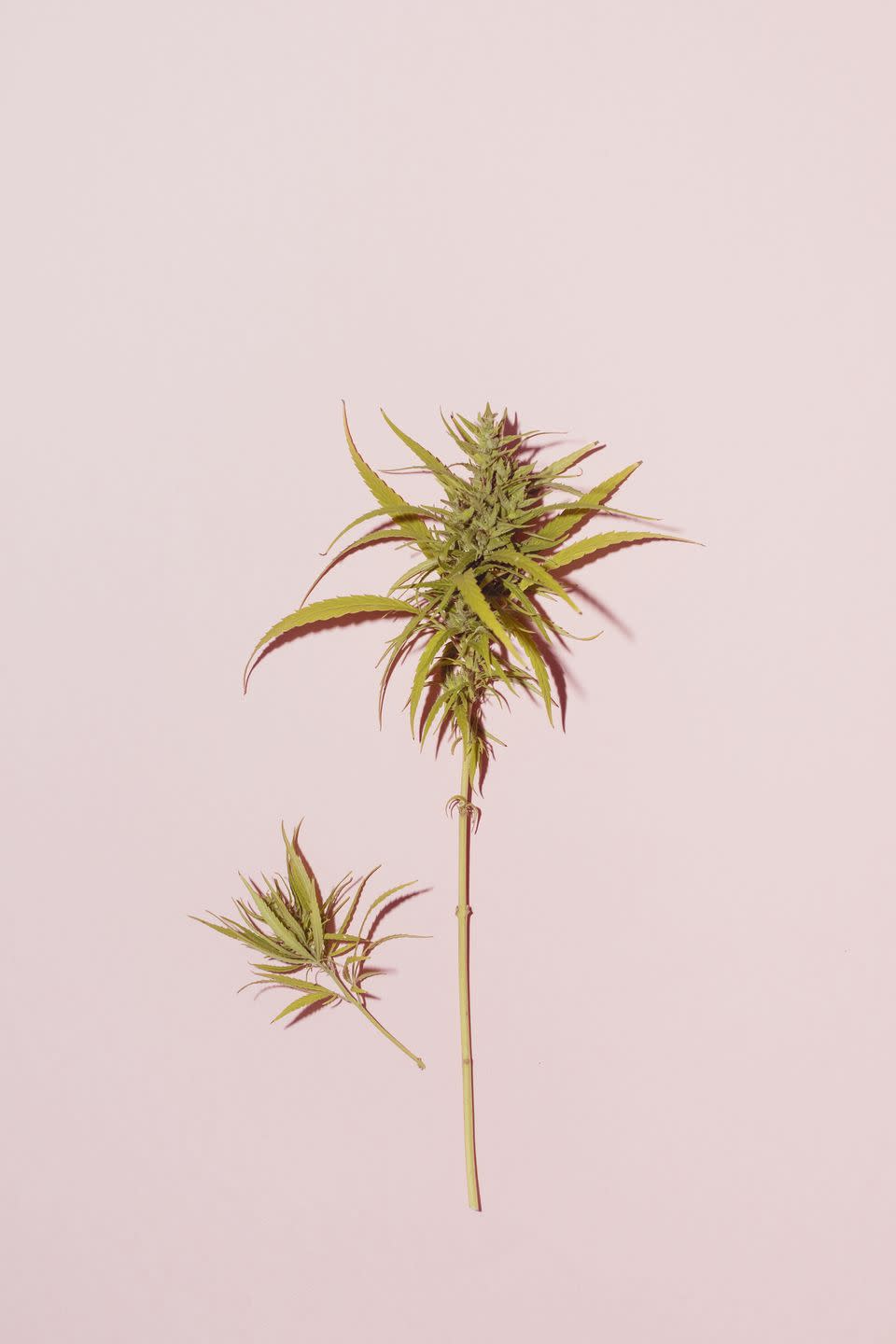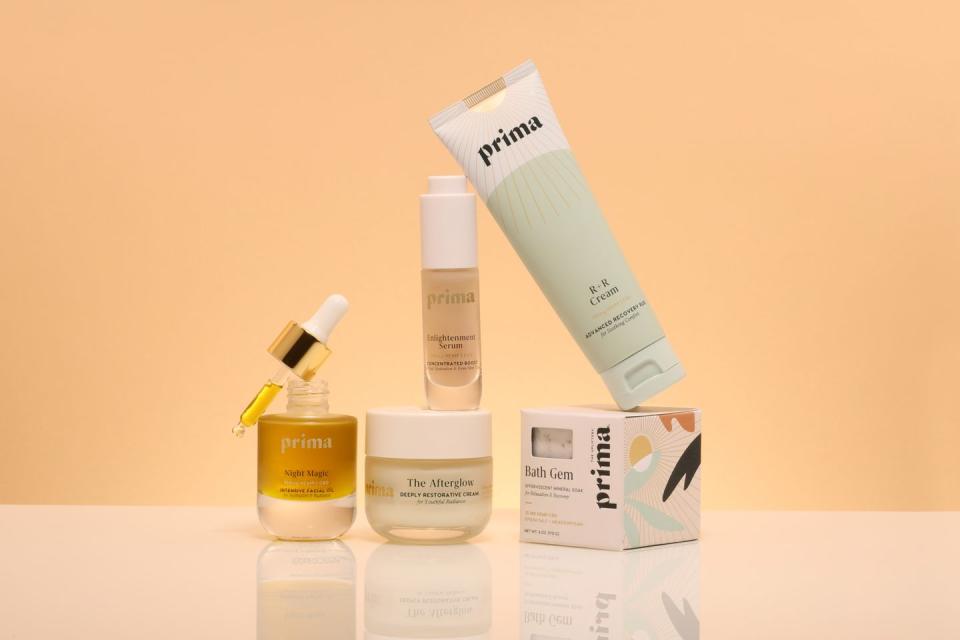CBD Skincare Has a Clean Beauty Problem

Search Google Images for “CBD skincare” and here’s what you’ll get: green bottles, green backdrops, and so, so many slender and spiky cannabis sativa leaves. (Also green, naturally.) It’s a fairly straightforward marketing tactic, all this viridescence and verdure, meant to make you see cannabidiol as natural, pure, safe, and sustainable. Psychologically, green translates to “clean.”
Pragmatically, however, it does not.
CBD’s Clean Beauty Problem
Though cannabidiol—also known as CBD, the buzziest cannabinoid in the beauty business—is derived from plants both leafy and green, that fact often has little bearing on the “clean” factor of a product’s final formulation. Plenty of recent launches boast cannabis sativa on the front of their labels and questionable ingredients on the back: mineral oils, PEGs, undisclosed fragrances, known skin sensitizers, and more. “Because CBD has been positioned almost as a hero ingredient, I do feel like there’s a disconnect between it being one of many botanicals in a product, versus it being the highlighted ingredient in a sea of potentially harmful industrial compounds,” Jessica Assaf, the cofounder and chief education officer of CBD skincare brand Prima, tells BAZAAR.com.

Assaf is more intimately acquainted with said harmful industrial compounds than most. As a teenager, she cofounded the activist organization Teens for Safe Cosmetics and advocated for clean beauty before “clean beauty” was a $25 billion-a-year category. In 2008, Assaf participated in the Environmental Working Group’s Teen Body Burden study. “My blood and urine were [tested], and 13 of 30 industrial compounds were found in my body,” she says; including those commonly found in cosmetics, like phthalates and parabens. “I finally had evidence to say that this matters, and we have control over some of these things in terms of the products we use.” After the study was complete, “the EWG remained instrumental in my early work of trying to compel companies to reformulate,” she notes. “We convinced O.P.I. to remove formaldehyde-releasing preservatives [from its nail polish].”
More than a decade later, the teen activist-turned-clean beauty cofounder is once again partnering with the nonprofit; this time, to announce Prima as the first hemp CBD brand to earn the rigorous EWG Verification on its skincare products.
“To me, it’s a safety stamp,” says Assaf—a safety stamp that some say is much needed in an industry that operates on a post-market regulatory system and profits off manipulative marketing claims.
“There is nobody enforcing what it means to be clean, nontoxic, or safe,” clarifies Laurel Angelica Myers, Prima’s cofounder and COO. “It’s not something the Food and Drug Administration has defined, and brands can use [those terms] in their marketing in any which way they please.” (See also: the above greenwashing.) “That’s why it’s really important for us to partner with independent, third-party, trusted advocacy groups and nonprofits to provide credibility for what we say that we’re doing,” says Myers.
What is the EWG?
Clean beauty enthusiasts likely already know and trust the EWG, or the Environmental Working Group: It’s the organization behind the Skin Deep cosmetics database, a running master list of cosmetic ingredients and corresponding safety studies that consumers can cross-check with their personal care products. “The Skin Deep database was my own aha moment,” Myers tells BAZAAR. “The EWG opened people’s eyes to the fact that there are ingredients available on the market that pose human health and safety risks, and Skin Deep offers an easy way to understand and assess and make smarter choices.”

But where Skin Deep relies on generalized ingredient data, the EWG Verified certification zeroes in on specific products from specific brands, taking into account everything from where the exact materials are sourced, to how the ingredients are processed, to the concentrations in the finished formulas. “Their team then has a team of toxicologists that goes through and assesses everything and identifies where these ingredients fall on the health and safety spectrum,” Myers explains. (The EWG looks to stricter international governing bodies, like Japan’s Ministry of Health and Health Canada, for guidance.) “There’s an additional documentation review where we provide concentrations of our ingredients, spec sheets, certificates of analysis, sometimes even process flow to look at potential contamination of ingredients,” the Prima COO shares.
In order to meet EWG Verified requirements, products must have a low-risk score of one or two (out of 10) in the Skin Deep database, and brands must disclose “additional information not typically found on the product label in an effort to drive the market toward greater transparency,” notes the brand. For example, the EWG requires that brands share their fragrance components—typically protected by FDA legislation around “proprietary” information—before they can be verified.
So what does this mean for customers? Basically, that when you see the EWG Verified mark on a product, you can rest assured that every single ingredient inside has been sufficiently vetted for safety (so you don’t have to do it yourself). This is especially appealing in the very trendy, often confusing, still evolving category of CBD skincare.
How Prima Is Redefining Clean CBD
Because Prima is the first CBD skincare brand to be EWG Verified, the nonprofit was tasked with gathering and analyzing all the available research on the recently popularized ingredient. “As with all new ingredients, EWG conducted a thorough review to determine if this ingredient has been flagged as being linked to adverse health or environmental impacts in the scientific literature or by any national and international authoritative bodies,” Nneka Leiba, vice president of Healthy Living Science at EWG, tells BAZAAR.
Two main areas of concern were identified: bioaccumulation in the hemp plants CBD is derived from and the presence of tetrahydrocannabinol, or THC.
“Hemp is a bioaccumulator, it’s known to soak up heavy metals from the soil,” Christopher Gavigan, the co-founder and CEO of Prima and an environmental scientist by training, tells BAZAAR. “That’s the big unknown in this category.” To make sure its full-spectrum hemp CBD is free from potentially toxic heavy metals, Prima sources its hemp from a “multigeneration cohort of family farmers” in the United States that farms organically, conducts microbiological testing for contaminants, and is certified by The Detox Project.
“Cannabidiol may contain elevated levels of tetrahydrocannabinol, which has been flagged as concerning by the FDA, the European Union, and Canadian government,” Leiba adds. “To account for this, EWG established a restriction on this ingredient for the Verified program. Our current restriction on THC content is 10 ppm, which is based on the restrictions from Health Canada.” Full-spectrum hemp generally contains only trace amounts of THC anyway (the compound is more concentrated in marijuana), which Prima further removes.
The brand hopes the EWG Verified mark reassures cautious customers that its CBD is not only safe, but also worth slathering all over your face.

How CBD Soothes Skin
“The cannabinoids in full-spectrum hemp, including CBD, work with the body’s endocannabinoid system, which is a system of receptors all throughout the body,” Assaf explains. “It’s activated on demand when we’re hit with a stressor and our body needs to maintain homeostasis—it’s the master regulatory system in that it promotes balance. The metaphor I like to use for the skin, which has its own endocannabinoid system, is that it’s like a lock-and-key system. So the endocannabinoids that the body produces kind of perfectly connect to the phytocannabinoids found in the plant to promote balance.”
Early studies show that, in terms of skin care, “balance” might look like optimized oil production, fewer breakouts, and less redness and irritation—although the research on topical CBD isn’t as robust as the research on ingestibles. “People are still trying to understand what it is and what it isn’t,” Gavigan says. “It’s really been in a fear-based prohibition for almost 100 years.”
Clean CBD Is a Social Justice Issue
Of course, that “fear-based prohibition” was largely the result of hemp’s proximity to marijuana (both plants belong to the cannabis family), and it’s impossible to talk about CBD without acknowledging the racial injustice within the cannabis industry. “We know in general that Black and white people use cannabis in equal amounts, yet Black people are incarcerated almost four times more than white people,” says Gavigan. (Gavigan, Assaf, and Myers are all white.) “That bears on our soul. We will and absolutely must address that.”
One way the brand is giving back to the Black community is by donating 1 percent of its annual revenue to charitable causes, including the Children & Nature Network in support of its Youth Outdoor Equity Leadership Fund. “This fund will support young leaders from the BIPOC and other marginalized communities working to increase equitable access to the benefits of nature, environmental and climate justice, and community health and well-being," the brand notes.
To Assaf, Prima’s work with the EWG is the work of social justice. “The EWG is trying to protect the most vulnerable consumers,” she muses—and within the beauty industry specifically, the most vulnerable consumers are consumers of color. A study from the EWG found that one in 12 beauty products marketed to Black women contain toxic substances, some associated with reproductive damage, with less than 25 percent of products in the space considered low hazard. A 2019 study showed that hair dyes and chemical straighteners are associated with a 60 percent increase in breast cancer risk for Black women compared to an 8 percent increase increase for white women. “We all have our own individual tipping point, so for someone out there, the EWG may be that safety net and protection,” says Assaf.
“Consumers need guardians and protectors and peace of mind and champions of their health,” Gavigan agrees. “They aren’t weekend toxicologists, they shouldn't be required to look up ingredients. It’s our job to be that guardian, to be that wellness supporter and champion.”
Ahead, shop the first clean CBD skincare products to be EWG Verified—no green bottles or slender, spiky cannabis leaves in sight.
You Might Also Like

